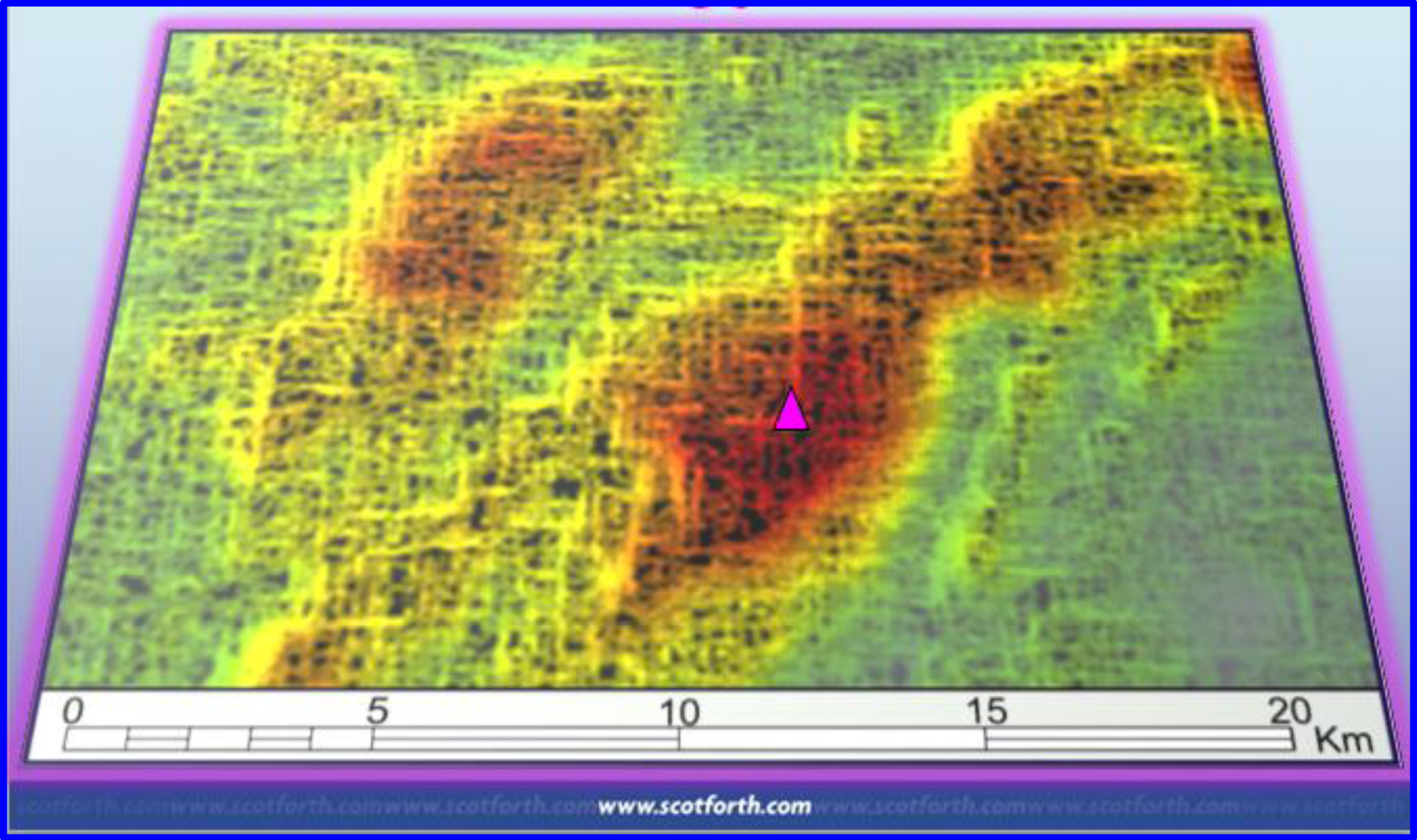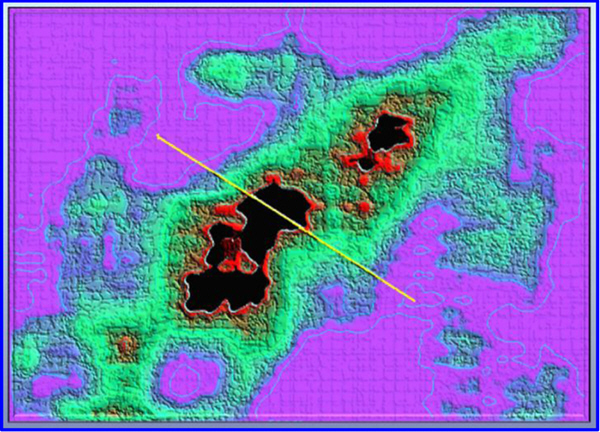Direct Hydrocarbon Mapping in the Tendrara Discovery District, Eastern Morocco
DHM provides high focus / low risk opportunities in the discovery district for rapid, successful and low cost commercial exploitation by industry.
I. Overview
Sound Energy plc (“Sound”) is having success in finding, appraising and building new gas reserves in Eastern Morocco.
Its flagship project in the Tendrara Gas Discovery District is moving these petroleum resources towards commerciality through progressive conventional petroleum operations and G&G activities.
Scotforth Limited (“Scotforth”) has been surveying the arid terrains of North Africa and their petroliferous basins for over ten years. It has examined Sound’s current East Moroccan area of primary interest in some detail during the past five years.
These sole risk Direct Hydrocarbon Mapping (“DHM”) survey works now provide Scotforth with confidence that it has effectively identified the gas footprint of this emerging East Moroccan petroleum province. It observes the Tendrara Gas Discovery District and other significant undiscovered gasfields more widely across this under-explored part of Morocco.
Today, these DHM findings provide a high focus, low risk inventory of opportunities for rapid, successful and low cost commercial exploitation by industry.
This Brief provides a short, illustrative taster of DHM findings in the Tendrara Gas Discovery District plus an example of a new, undrilled prospect (one of a ranked inventory) that could be of similar size to Tendrara and progressed for exploration drilling on a fast track basis.
Scotforth considers that Eastern Morocco now has a DHM identified gross risked petroleum resource potential sufficient to make its case for early E&P pursuit and commercialisation by Sound and others.
DHM depends on Scotforth’s proprietary RSDD-H processing of satellite images to provide the essential spectral recognition platform for hydrocarbon-focused prospectivity analysis. This normally includes derivative processing and anomalous spectral response area detection of Hydrocarbon Lead Indicators or “HLIs”. The two DHM output map forms are:
- Iso Photo Density displays (IPDs)
- Contoured Relative Brightness Unit (RBU) displays.
Together, these provide powerful insights into the gross areas, net : gross distribution patterns and areal extent of the inner core areas of the fields and HLI prospects. This combination enables rather accurate field and prospect mapping with clear definition of preferred possible well locations and positioning awareness of past wells. Commercial mapping takes place at scales of 1:250,000 (regional) through 1:50,000 (fields /prospects).
II. Tendrara Gas Discovery District
A DHM spectral response map (Figure 1) and RBU cross-section (Figure 2) of the Tendrara Gas Discovery District illustrate clearly the proven and probable extent of the field:

Figure 1. RBU Image display of Tendrara Gasfield- predicted high Hydrocarbon Net Pore Volume (HNPV) inner field sub-areas in black /red and lower HNPV outer field areas in green. Magenta areas are expected non-productive off field terrains.

Figure 2. RBU NW-SE cross-section profile illustrating central field, outer field and off-field spectral response values. Red bar indicates predicted high HNPV areas suitable for reserves appraisal field mapping and early development drilling (black / red in Figure 1).
III. Undrilled DHM Exploration Prospect and Lead
A DHM inventory of new prospects and leads has been identified in neighboring districts of Eastern Morocco and indeed within the “Greater Tendrara Gas Discovery District”. It is likely that progressive conventional exploration surveying by Sound and others will identify some of these but without “hydrocarbon-indicator” differentiation as to which may prove to be dry or at least of lower pre-drill ranking order than the best of the DHM features.
Figure 3 illustrates a high intensity large DHM prospect and a nearby lower intensity, smaller DHM lead.

Figure 3. IPD Image display of a new DHM exploration prospect
Hot orange/ black HLI areas appear prospective on this DHM/HLI evidence. The main and stronger anomaly will map out with greater detail under higher resolution processing and multi-image mapping. Magenta triangle indicates (approximate) central HLI first test well location.
Given the Tendrara DHM calibration, this appealing new DHM prospect now becomes a low risk / high Probability of Discovery (PD) feature. Measuring approximately 30-40km2 (gross) it could contain significant and potentially commercial reserves. For present, its undrilled gross unrisked and risked Prospective Resources await more definitive estimation, taking into account Tendrara – style geological parameters. Geographical coincidence with any emerging 3-D seismic prospect would then further enhance the PD and gross risked Prospective Resource expectations prior to drilling or indeed refine any post discovery estimations according to the areal extent comparison between the DHM and 3-D prospect “closure” areas. Strategic technical and commercial value is gained.
If you would like to download a copy of this article, please click here.

